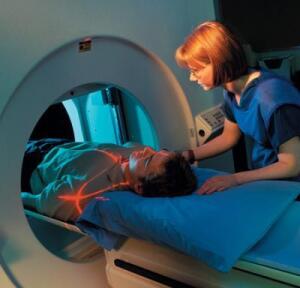In an accident or terrorist attack leaving dozens or hundreds of victims, doctors must quickly triage patients, deciding who needs treatment first. And doctors think that in emergency rooms, newer, faster CT scanners with volume image reading can help.
In a new study simulating one of these horror scenarios, doctors found that 64-slice CT scanners that transferred images to a workstation while exams were still running allowed doctors to process more than twice as many images per hour as a lower-slice unit that used traditional PACS transfers.
"Because PACS transfer can be slow, volume image reading considerably increases the workflow," write the authors, led by Dr. Markus Körner of the department of clinical radiology with Munich University Hospital in Munich, Germany.



Ad Statistics
Times Displayed: 186622
Times Visited: 4999 For those who need to move fast and expand clinical capabilities -- and would love new equipment -- the uCT 550 Advance offers a new fully configured 80-slice CT in up to 2 weeks with routine maintenance and parts and Software Upgrades for Life™ included.
Newer, higher-slice CT scanners allow faster image processing with better spatial resolution, the researchers said. Sixteen-row scanners came out in 2002, and 64-row ones in 2004.
More importantly, they said volume image reading can be faster, as it's processed online while the exam is still running, "without having to wait for technicians to compute these images and send them to a PACS."
In the study, published in the September issue of the American Journal of Roentgenology, researchers got the 64-slice data after simulating the results of a roof collapse at a packed ice hockey arena, with around 80 casualties. This was compared to the 4-slice results taken in two earlier simulations involving public bombings, and around 100 imaginary casualties each.
In mass casualty incidents, such as these, victims are usually triaged on site but then undergo a secondary triage in the emergency room to determine further care. The researchers had previously shown that multi-slice CT scans could be used for triage in mass emergencies.
For the study, the researchers used one of two kinds of CT scanning set-ups.
One group was scanned with a 4-slice system, with data relayed to a PACS. The other used a GE Healthcare-built 64-slice scanner, with images sent to a dedicated 3-D workstation. In both scenarios, anthropomorphic dummies were given one head scan and one contrast-enhanced scan of the trunk.
The amount of time it took to actually prepare patients for the scans was the same, but the image processing and transfer was twice as fast with the 64-slice scanners with volume image reading, the researchers said, leading to "evident advantages in the radiologic trauma workflow."
On average, it took 4.1 minutes to acquire, reconstruct and transfer images for 64-slice scans, versus the 9 minutes for 4-slice scans. In the end, the researchers managed 14.8 examinations per hour with 64-slice versus 6.7 per hour with 4-slice. The mean number of images were 953 with 64-slice, and 202 with 4-slice, the researchers said.
However, the researchers do note that for volume image reading, there was a snag: the large datasets used led to a data overload of their 3-D workstation, causing it to crash. The team had a second, identical workstation on hand for use while the first was restarted, but they said it showed how "crucial" it was to have such a backup.
Also, interestingly, they said the study suggests CT examination time has reached a "plateau" because of technical preconditions and patient prep requirements.
"Even when the 64-MDCT scanner was used, there was no appreciable time saved with the scan time," they wrote. "The mere data acquisition time is only a part of the examination time; delay after injection of contrast material and planning the scan volumes cannot be reduced further even with faster CT machines."
Note: the researchers reported their department received a grant from GE Healthcare (which made the 64-slice scanner and the workstation) although they got no personal funding for the study.

